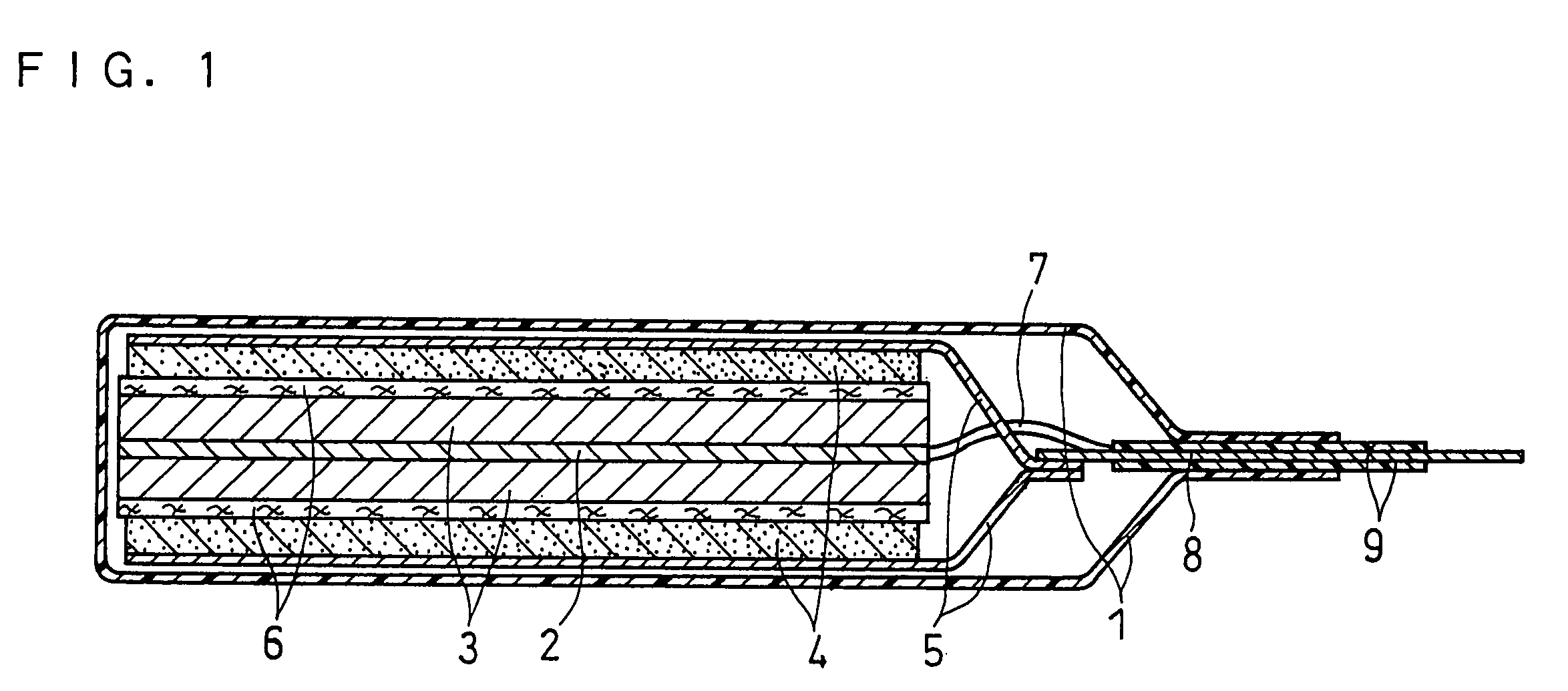Negative electrode for non-aqueous electrolyte secondary battery, production method thereof and non-aqueous electrolyte secondary battery
a technology of non-aqueous electrolyte and secondary battery, which is applied in the direction of secondary cell servicing/maintenance, cell components, electrochemical generators, etc., can solve the problems of short charge/discharge cycle life, and inability to expect further increase in capacity, etc., to achieve excellent safety, long cycle life, and high capacity
- Summary
- Abstract
- Description
- Claims
- Application Information
AI Technical Summary
Benefits of technology
Problems solved by technology
Method used
Image
Examples
example 1
FIG. 1 shows a vertical sectional view of a non-aqueous electrolyte secondary battery fabricated in Example 1.
This battery was fabricated as follows:
(i) Production of Positive Electrode
100 parts by weight of lithium cobaltate (LiCoO2) as an active material was mixed with 3 parts by weight of acetylene black as a conductive agent, and a solution of N-methyl-2-pyrrolidone (NMP) dissolving 4 parts by weight of polyvinylidene fluoride (PVDF) as a binder was added into the resultant mixture and kneaded with the same to obtain a paste-like positive electrode material mixture. The obtained positive electrode material mixture was applied on one face of a current collector sheet 5 made of an aluminum foil with a thickness of 15 μm, which was dried and rolled by pressure to form a positive electrode active material layer 4. Subsequently, the current collector sheet with the active material layer carried thereon was cut into the material mixture area of 35×35 mm, and a positive electrode...
example 2
A negative electrode was obtained in the same manner as in Example 1 except that the thickness of the silicon monoxide film was made 10 μm by reducing the number of vapor deposition. Further, in order to render a positive electrode capacity consistent with a negative electrode capacity, the thickness of the positive electrode active material layer and the active material weight were changed to half of those in Example 1. These positive electrodes and negative electrode were used to fabricate a battery in the same manner as in Example 1. This battery was referred to as Battery of Example 2.
example 3
A negative electrode was obtained in the same manner as in Example 1 except that the thickness of the silicon monoxide film was made 5 μm by reducing the number of vapor deposition. Further, in order to render a positive electrode capacity consistent with a negative electrode capacity, the thickness of the positive electrode active material layer and the active material weight were changed to a quarter of those in Example 1. These positive electrodes and negative electrode were used to fabricate a battery in the same manner as in Example 1. This battery was referred to as Battery of Example 3.
PUM
| Property | Measurement | Unit |
|---|---|---|
| Thickness | aaaaa | aaaaa |
| Thickness | aaaaa | aaaaa |
| Thickness | aaaaa | aaaaa |
Abstract
Description
Claims
Application Information
 Login to View More
Login to View More - R&D
- Intellectual Property
- Life Sciences
- Materials
- Tech Scout
- Unparalleled Data Quality
- Higher Quality Content
- 60% Fewer Hallucinations
Browse by: Latest US Patents, China's latest patents, Technical Efficacy Thesaurus, Application Domain, Technology Topic, Popular Technical Reports.
© 2025 PatSnap. All rights reserved.Legal|Privacy policy|Modern Slavery Act Transparency Statement|Sitemap|About US| Contact US: help@patsnap.com


